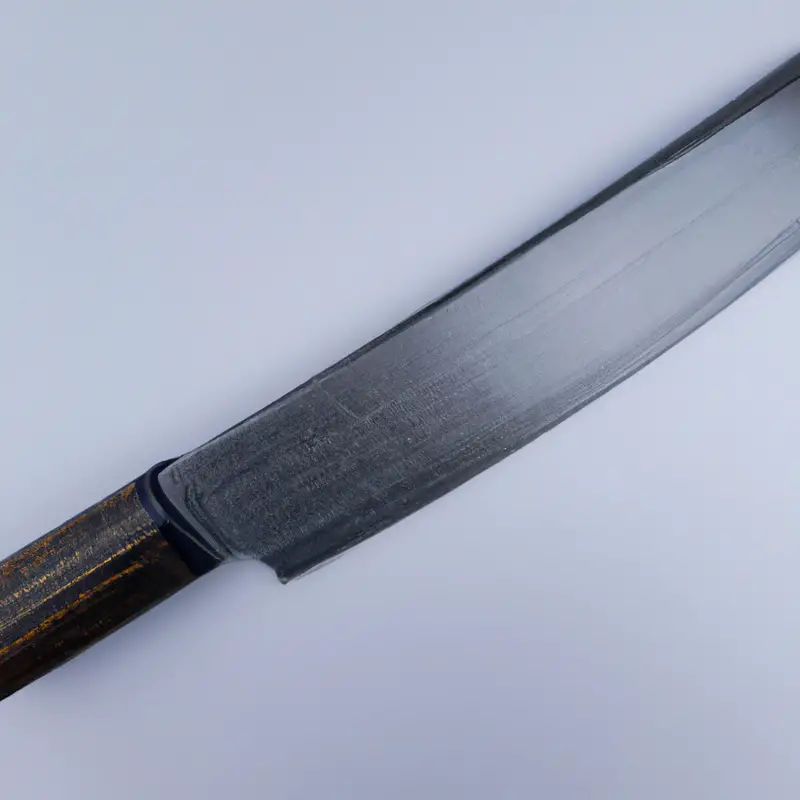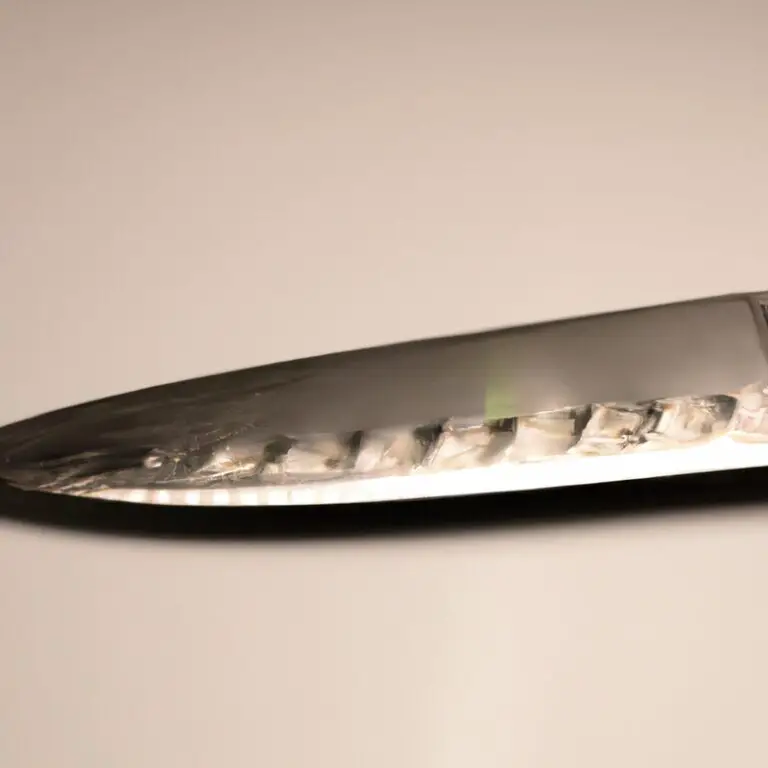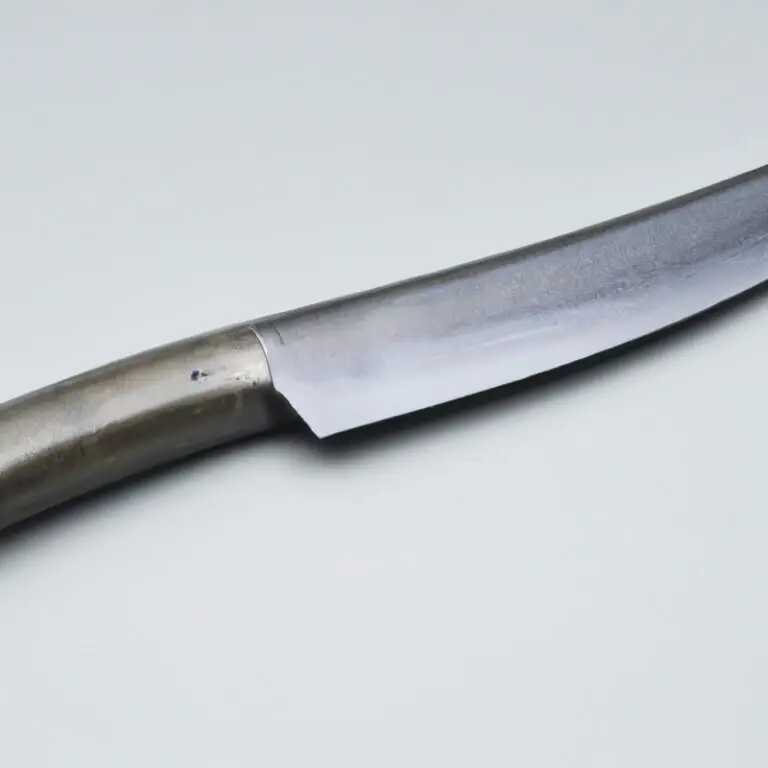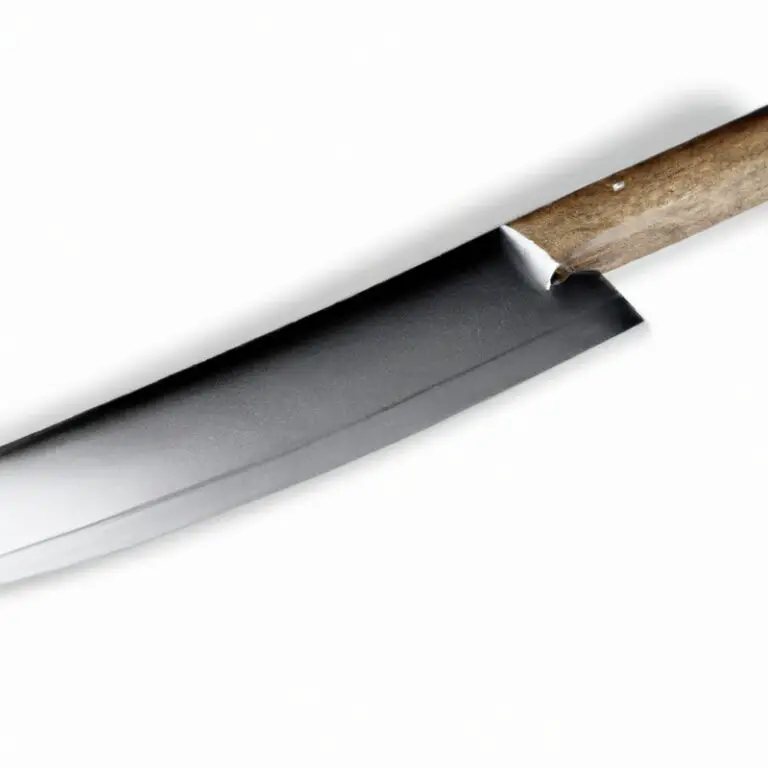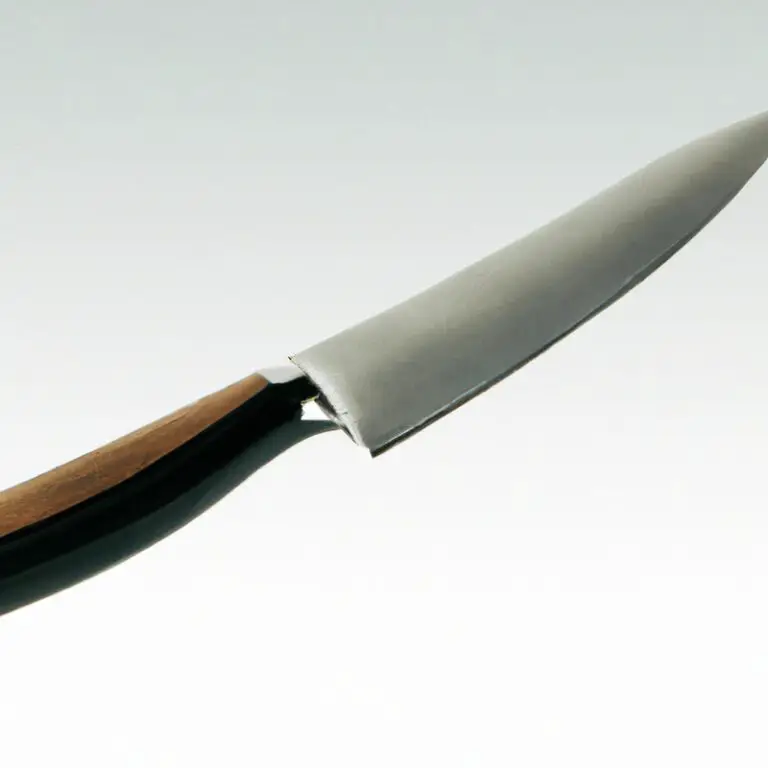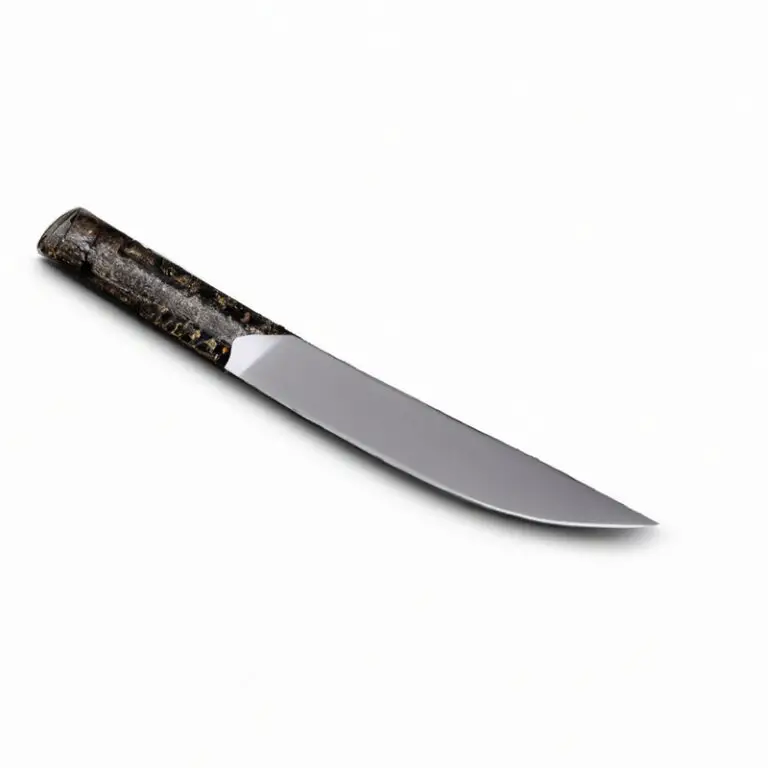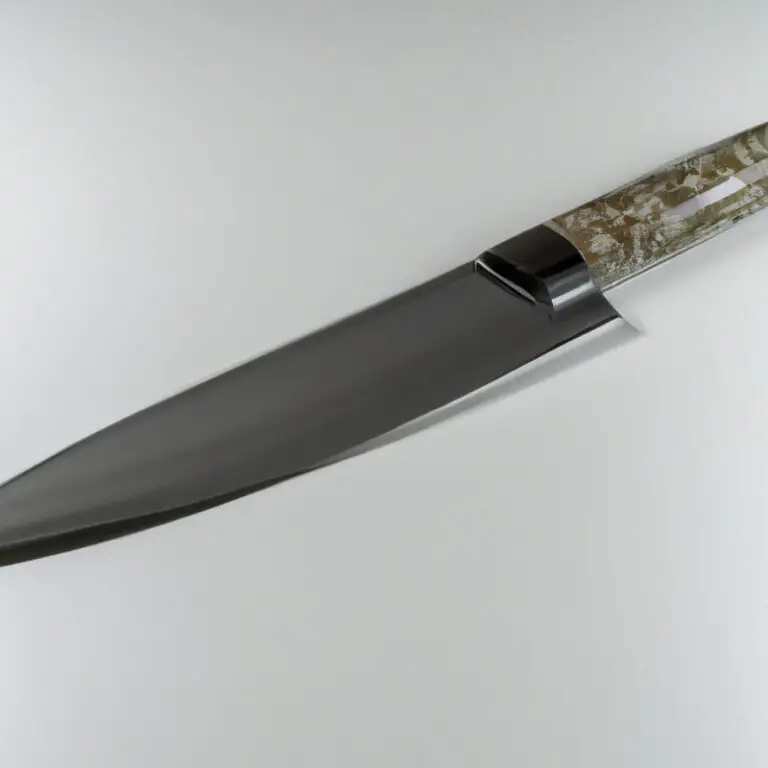What Are The Safety Measures To Consider When Using a Gyuto Knife? Stay Safe!
Key Takeaways:
- Always handle a Gyuto knife with care and attention to avoid accidents.
- Keep the knife sharp to prevent slipping and apply the proper cutting techniques for different types of food.
- Use a cutting board with anti-slip properties and avoid cutting on hard surfaces to reduce the risk of the knife breaking or chipping.
- Ensure proper storage, cleaning, and maintenance of the knife to prolong its lifespan and ensure a safe and efficient cutting experience.
As a chef or a home cook, you want to ensure that you’re using your kitchen tools safely, especially your Gyuto knife. The Gyuto knife is a versatile tool that can handle different tasks when it comes to preparing your ingredients.
However, it also comes with a certain risk if not handled with care.
With that in mind, it’s essential to know the safety measures when using a Gyuto knife to avoid potential accidents. Whether you’re a beginner or an expert, these safety tips will help you stay safe and efficient in the kitchen.
| Safety Measures | Description |
|---|---|
| Choose a good quality Gyuto knife | A good quality knife is made of durable materials that will not easily break or chip off. This ensures that the knife remains safe to use even after prolonged use. |
| Properly handle the knife | Hold the knife firmly and use a proper grip to prevent slipping. This reduces the risk of accidents, especially when handling sharp or heavy objects. |
| Sharpen the blade regularly | A dull blade requires more force and can slip, potentially causing injury. Properly sharpening the blade keeps it sharp and reduces the risk of accidents. |
| Use a cutting board | Using a cutting board is important in preventing accidents and damage to both the knife and the surface. It also keeps the blade sharp longer. |
| Properly store the knife | After use, store the knife in a safe place away from children and pets. This reduces the risk of accidents and damage to the knife. |
Understanding the anatomy of a Gyuto knife: Safety starts with getting to know the parts of your Gyuto knife
To ensure safety when using a Gyuto knife, it is critical to understand its anatomy. A Gyuto knife is made up of the blade, handle, bolster, and tang.
The blade is the sharp, pointed part used for cutting, while the handle provides grip and control.
The bolster is the thick metal band between the blade and handle, which improves stability and balance. The tang is the blade’s extension that runs through the handle for added strength and balance.
Familiarizing yourself with these parts and their functions is essential for safe and efficient knife handling.
Choosing the right Gyuto knife for your needs: Picking the right knife for the task at hand is crucial for safety and efficiency
Choosing the right Gyuto knife for your needs is crucial for safety and efficiency. When selecting a Gyuto knife, consider the size, weight, and blade material.
For general kitchen tasks, a Gyuto knife with a blade length between 8-10 inches and a weight of around 7-9 ounces is suitable.
If you have large hands, consider a knife with a larger handle. A carbon steel blade is ideal for a sharp edge, while stainless steel is more durable and resistant to rust.
Consider your budget and intended usage when selecting a Gyuto knife, and look for reputable brands that offer high-quality craftsmanship.
Remember, using the right Gyuto knife for the right task minimizes the risk of accidents.
Maintaining your Gyuto knife: Proper maintenance ensures that your knife is always sharp and reduces the risk of accidents
Proper maintenance is key to keeping your Gyuto knife sharp, reducing the chances of accidents. Here are some tips for maintaining your Gyuto knife:
- Clean your knife after each use with mild soap and warm water. Dry it thoroughly to avoid rust.
- Use a honing rod regularly to maintain the sharpness of your knife. Sharpen your blade only when it is dull to avoid unnecessary wear and tear.
- Store your Gyuto knife properly in a knife block or a protective sheath to prevent damage.
- Avoid cutting hard materials like frozen food or bones with your Gyuto knife. It can damage the blade and make it dull over time.
- Use a wooden or plastic cutting board to prevent damage to your knife’s edge.
By following these simple maintenance tips, you can ensure your Gyuto knife stays in top shape and reduces the risk of accidents while using it.
Using a cutting board: A stable cutting board is essential for safety when using a Gyuto knife
To ensure safety when using a Gyuto knife, it is essential to use a stable cutting board. A wobbly or unsteady cutting board can cause the knife to slip, leading to severe injuries.
Choose a cutting board made of sturdy materials like wood or plastic.
Avoid using glass or marble cutting boards as they can damage the knife’s sharp edge. Place a damp towel or non-slip mat under the cutting board for added stability.
It is also essential to clean and sanitize the cutting board after each use to prevent cross-contamination.
Remember, a stable cutting board is a crucial element in ensuring safety when using a Gyuto knife.
Proper grip and hand placement: Correct grip and hand placement when using a Gyuto knife reduces the chances of injury
Proper grip and hand placement play a significant role in the safe use of a Gyuto knife. It is essential to hold the knife securely so that the blade does not slip or twist while in use.
The proper grip for a Gyuto knife involves wrapping your fingers around the handle, with your thumb resting on the spine of the blade.
This grip provides optimal control over the blade and reduces the chances of injury. Hand placement is equally important when using a Gyuto knife.
Placing your guiding hand on the top of the blade helps to guide the knife’s movement and keep your fingers out of harm’s way.
The guiding hand should be positioned behind the blade, with the thumb resting on the side of the blade. Remember to keep your wrist straight when using a Gyuto knife.
A straight wrist ensures that the blade moves in a uniform motion, preventing accidental cuts or injuries.
Finally, make sure to use a cutting board that provides a stable working surface. With correct grip and hand placement and a stable cutting board, you can safely use your Gyuto knife without any risk of injury.
How to make slicing and chopping movements safely: Safely execute slicing and chopping movements with a Gyuto knife to create a secure working environment
To make slicing and chopping movements safely with a Gyuto knife, follow these steps:
- Hold the knife properly with a firm grip and ensure your fingers are positioned behind the blade.
- Use a stable cutting board that won’t slide around during use.
- Keep the knife’s blade sharp and honed to prevent it from slipping while cutting.
- Use a fluid, consistent motion when slicing or chopping, and avoid jerky movements.
- Pay attention to what you’re doing and avoid distractions while using the knife.
- Keep your other hand and fingers away from the blade.
By following these steps, you can ensure that you’re using your Gyuto knife safely and securely.
Sharpening and honing your Gyuto knife: A dull knife is dangerous to use. Learn how to sharpen and hone your Gyuto knife properly
Sharpening and honing your Gyuto knife is crucial to ensure its effectiveness and safety. A dull knife requires more pressure to cut, making it more difficult to control and increasing the risk of slipping or losing control.
To sharpen your Gyuto knife, you can use a sharpening stone with a coarse and a fine side.
Hold the knife at a 20-degree angle and sharpen it in a back-and-forth motion on the coarse side, then repeat the same process on the fine side. Finally, hone the blade using a honing steel to realign the blade’s edge.
Regularly sharpening and honing your Gyuto knife ensures that it remains in optimal condition for use.
Safe storage practices: Keep your Gyuto knife safe and secure when not in use
Safe storage practices are essential for maintaining the longevity and safety of your Gyuto knife. After use, it is crucial to clean and dry the knife thoroughly before putting it away.
A dull and wet blade can damage the edge and create a breeding ground for bacteria.
Store the knife in a sheath or a knife block to protect the blade from dulling and keep it out of reach of children and pets. Avoid storing the knife with other utensils to prevent nicking or scratching the blade.
Proper storage ensures that your Gyuto knife remains in optimal condition and ready for use.
Avoiding distractions: Staying focused when using a Gyuto knife is critical for avoiding accidents
When using a Gyuto knife, it is crucial to stay focused and avoid distractions to prevent accidents and injuries. Avoid multitasking or engaging in conversations when using the knife.
Always keep your attention on the task at hand.
Remove any distractions such as phones, pets, or any other potential disruptions from your workspace. Be mindful of your surroundings and the people around you.
Remember, even a moment of lost focus can lead to severe consequences.
Stay focused, stay safe.
Responding to cuts and injuries: Know what to do if you accidentally cut yourself when using a Gyuto knife
If you accidentally cut yourself when using a Gyuto knife, here’s what to do:
- Stop the bleeding by applying pressure with a clean cloth or sterile bandage.
- Clean the wound thoroughly with soap and water, then cover it with a sterile bandage or dressing.
- Seek medical attention if the cut is deep or if bleeding does not stop after 10 minutes of applying pressure.
- If the wound is severe, call emergency services.
- Dispose of any contaminated items safely and promptly disinfect the area where the accident happened.
- Reconsider your safety practices, such as proper grip and hand placement, maintaining a sharp knife, and staying focused.
Remember, accidents can happen even to the most experienced chefs, so it’s essential to know what to do in case of an emergency.
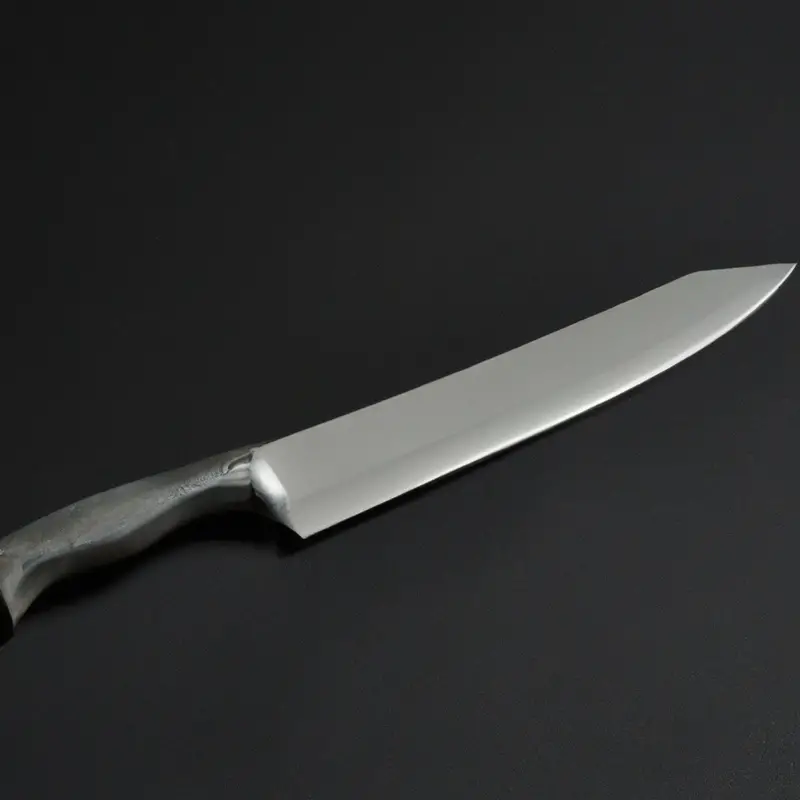
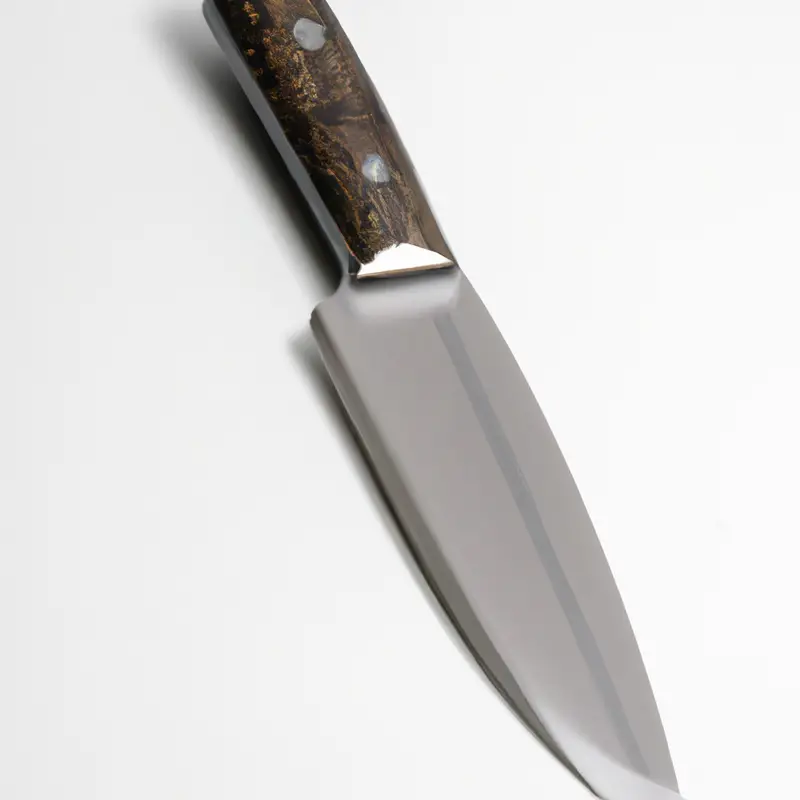
Final Verdict
Using a Gyuto knife safely requires not only knowledge of its anatomy and proper use, but also a respect for the potential danger it poses. By choosing the right knife, maintaining it properly, using a stable cutting board, employing correct grip and hand placement, making slicing and chopping movements safely, sharpening and honing with care, practicing safe storage practices, avoiding distractions, and knowing how to respond to cuts and injuries, you can ensure your safety while creating culinary works of art.
By implementing these safety measures, you minimize the risk of accidents and injuries in the kitchen.
Remember, being a skilled and safe chef is not only about the delicious dishes you can create, but also the reliability and professionalism you bring to the table.

